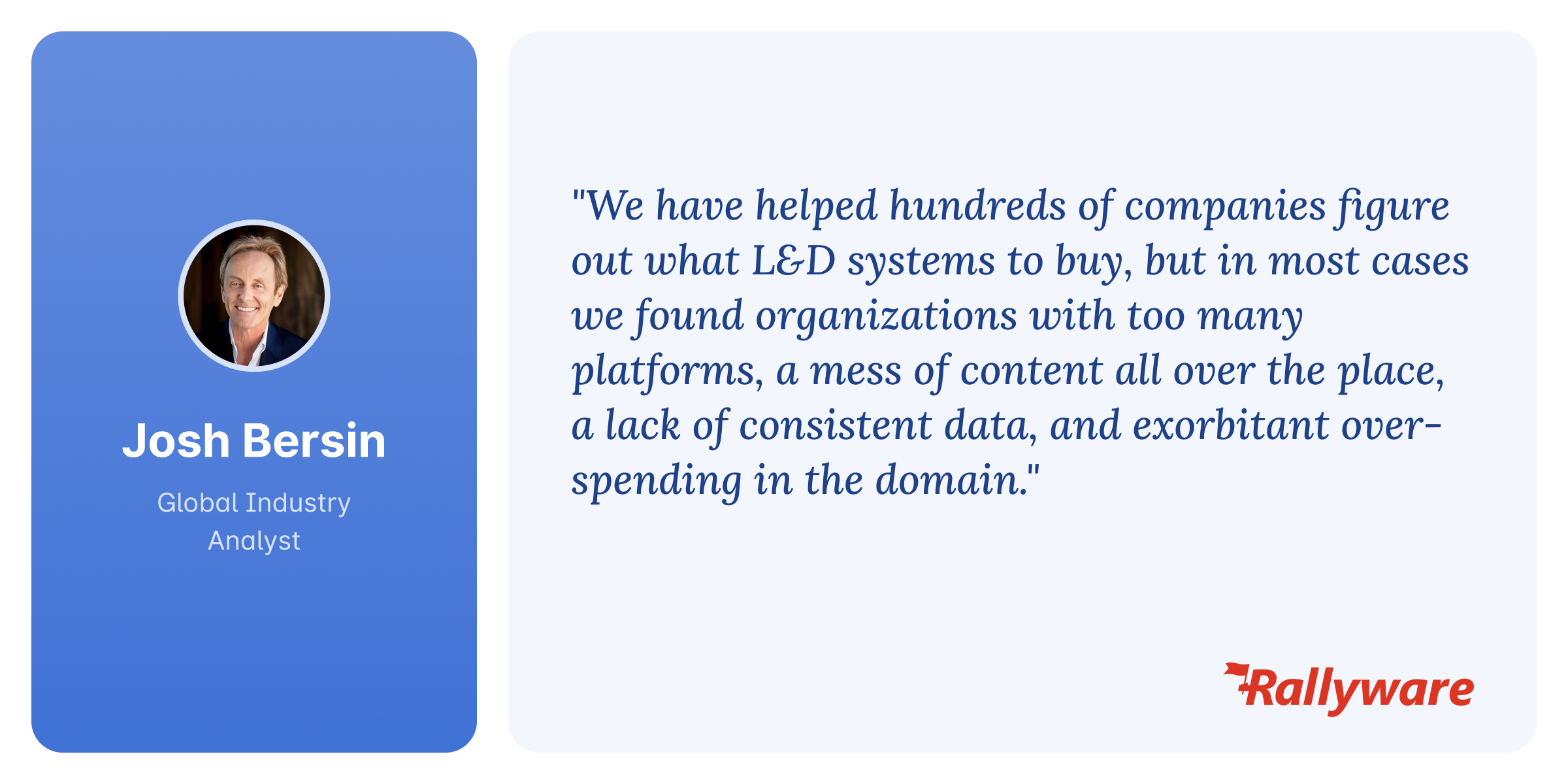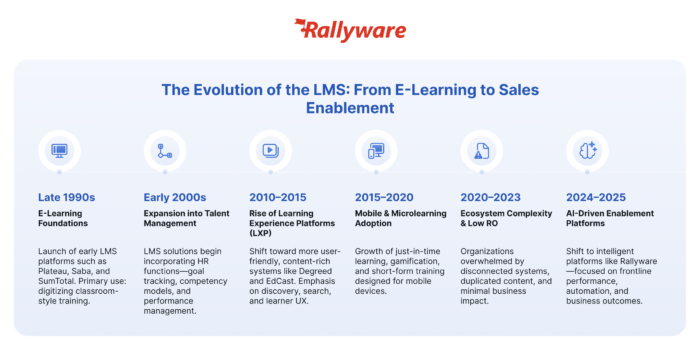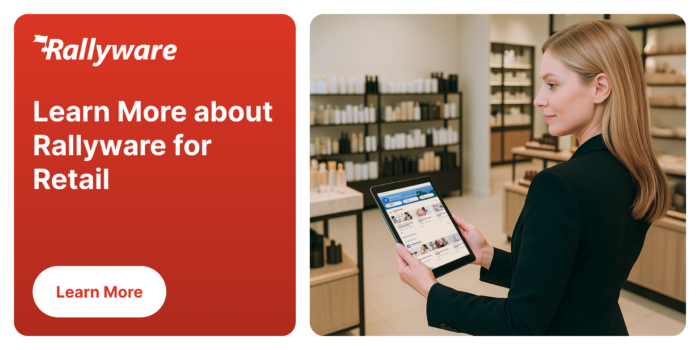Navigating Retail Generational Diversity
Retail LMS Software That Drives Performance: What to Look for in 2025
As physical retail rebounds and in-store execution takes center stage, retailers are asking harder questions about their learning systems. Is your LMS just pushing content—or is it improving performance?
In 2025, the answer matters more than ever.
The LMS Market Is Booming—But Most Tools Still Fall Short
While the corporate LMS market is growing rapidly—with a projected global market increase of $55.6 billion from 2025 to 2029 (Technavio)—many platforms are still missing the mark where it counts: frontline performance.
Global LMS Market Highlights
- The corporate LMS market is forecast to grow by $55.6 billion by 2029, with a year-over-year growth of 25.8% in 2023 alone.
- North America leads with 38% of global market share and continues to shift toward cloud-based, mobile-first platforms.
- Companies like Coca-Cola and Unilever are already using LMS platforms to upskill frontline and factory-based employees.
But growth doesn’t equal impact.
Most LMS systems are still passive—they deliver content, but not action. That’s where enablement platforms like Rallyware change the game.
Many retail leaders are finding that their LMS doesn’t meet the evolving demands of today’s store environments. According to MetaPress, traditional training approaches often fall short due to time constraints, high turnover, and the difficulty of maintaining service quality across locations.
In one example, a national fashion chain found that it took new hires three full months to become competent in their roles—far longer than ideal, directly impacting customer satisfaction scores. These gaps highlight what many retailers already know: legacy LMS tools often don’t scale well, don’t adapt to performance needs, and don’t drive measurable impact on the floor.
What Is a Retail LMS?
A retail LMS (learning management system) is designed to deliver training and development programs to retail employees—typically associates on the sales floor. In theory, it helps onboard new hires, provide product knowledge, and keep teams compliant.
But in practice, most retail LMS tools weren’t built for the fast-paced, frontline reality of modern retail. They assume your team sits at desks. They weren’t designed for mobile, role-based, performance-linked execution.
Why Most Retail LMS Platforms Fall Short
Most LMS platforms were built as content repositories, not performance tools. They:
- Deliver static, one-size-fits-all training
- Struggle to adapt to different roles, store needs, or live KPIs
- Don’t track actual business impact—like sales lift, productivity, or retention
The result? Low adoption. Minimal ROI. Disengaged frontline teams.
Learning leaders are already fed up. According to global industry analyst Josh Bersin, most companies today are dealing with “too many platforms, a mess of content, a lack of consistent data, and exorbitant over-spending.” LMS systems have become bloated, outdated, and disconnected from the performance metrics that matter—especially in retail environments where agility, speed-to-productivity, and in-store execution are non-negotiable. The old model of passive content delivery just doesn’t cut it anymore. Retailers don’t need more courses—they need tools that drive the right behavior in the moments that matter.

The pressure to improve in-store execution has never been greater. While e-commerce continues to evolve, 76% of core retail sales still happen in physical stores, according to Retail Dive’s 2025 analysis. And those stores now play an essential role in omnichannel fulfillment, product discovery, and customer loyalty.
As the brick-and-mortar channel reasserts its value, retailers need more than checkbox LMS tools. They need enablement systems that help store teams execute—not just consume content. That means training that adapts to KPIs, prescribes action, and impacts real business outcomes.

Top 10 Must-Have LMS Features for High-Performance Retail Teams
The LMS market is full of platforms promising smarter learning—but many still function like digital filing cabinets. For today’s fast-moving retail environments, the bar is much higher.
A modern retail LMS must do more than deliver content. It should streamline employee training, support fast onboarding, ensure consistent knowledge delivery across store locations, and track progress in ways that actually improve sales performance and customer experience.
Unlike traditional LMS platforms—which were built for corporate HR teams—a retail-specific LMS is purpose-built for the realities of in-store execution. That means:
- Mobile-first access for on-the-floor training
- Integration with POS systems and performance data
- Modules designed around product knowledge, customer interaction, and real-time sales enablement
This isn’t just about compliance or check-the-box training. Retailers need tools that adapt to daily business needs, trigger actions based on live performance signals, and drive measurable outcomes. They need training tools that can directly tie to sales results. Here’s what to look for in a next-gen LMS built for frontline retail performance and enablement.
1. Mobile-First Design for the Floor, Not the Desk
Training must be accessible in real time, from any device. Associates shouldn’t have to step away from customers to complete a course. Modern systems embed learning directly into the daily flow of work.
2. Performance-Triggered Learning and Tasking
Next-gen LMS platforms don’t wait for admins to assign content. They act on performance signals. If a store misses sales targets for a product category, the system should automatically trigger training, tasks, or coaching to address the gap.
3. Contextual, Role-Based Personalization
No two stores—or roles—are the same. A part-time cashier in New York and a store manager in Texas require different learning paths. A future-ready LMS should personalize content by region, role, behavior, and business goals.
4. Built-in AI Coaching and Knowledge Access
LLMs (Large Language Models) should do more than summarize content. Look for systems that provide real-time coaching, answer process-related questions, and adapt learning journeys dynamically—without overloading your L&D team.
5. Integrated Incentives and Recognition
Engagement doesn’t come from content alone. A modern LMS connects learning to leaderboards, reward systems, and recognition programs—helping associates see progress, celebrate wins, and stay motivated.
6. Insights That Go Beyond Completion Rates
Tracking “who completed what” isn’t enough. You need visibility into which learning activities drive sales lift, faster ramp time, improved service, and stronger retention. A performance-focused LMS ties learning directly to measurable outcomes.
7. Seamless Integration with Store Systems
Your LMS shouldn’t operate in a vacuum. It should connect with your POS, scheduling, HRIS, and comms tools—so learning fits naturally into daily operations and data flows freely.
8. Real-Time Content Updates and Localization
In retail, change is constant. Look for a system that allows for fast updates to content (pricing, promotions, compliance) and supports multi-language, region-specific training without creating version chaos.
9. Support for Seasonal and High-Churn Teams
Modern LMS platforms should accommodate high-turnover environments. That means intuitive onboarding, modular content, and performance tracking that works—even for teams that change weekly.
10. Embedded Communications
Training and communication should live in the same platform. Look for built-in newsfeeds, chat, and alerts so store teams don’t have to check six systems to stay informed.
Why Sourcing the Best LMS Platform for Retail Matters Now
According to Retail Dive, over 76% of core retail sales still happen in-store as of 2025—despite the e-commerce boom. And yet, according to eLearning Industry’s latest LMS review index, customer satisfaction and perceived usefulness scores vary widely across platforms, with many failing to deliver on integration, usability, or performance visibility.
Retailers relying on outdated systems miss the mark where it matters most: on the sales floor. A modern LMS should do more than train—it should enable execution, close performance gaps, and drive measurable business results.
Retail LMS Buyer Checklist for 2025
Legacy LMS platforms weren’t built for retail’s realities—high turnover, shifting KPIs, and teams who don’t sit at desks.
If training doesn’t drive action on the floor, what’s the point?
That’s why Rallyware goes beyond content delivery. We connect learning to business outcomes—tying training, tasking, coaching, and communications into one system that adapts to your teams in real time.
When evaluating vendors, ask:
☐ Will our store teams actually use it?
☐ Does it personalize content by role or performance?
☐ Can it tie training to KPIs like sales, productivity, or engagement?
☐ Does it centralize comms, incentives, and tasking?
☐ Will it consolidate tools and reduce overhead?
If not, it’s time to move beyond LMS—and into enablement.
Rallyware Isn’t a Retail LMS—It’s a Sales Enablement Platform
Rallyware goes far beyond traditional LMS tools by delivering an end-to-end sales enablement engine:
- Business Rules Engine: Automatically delivers the right training, task, or incentive based on real-time performance data
- Unified Experience: Training, communications, and daily workflows all live in one mobile platform
- Real Sales Outcomes: Customers see 25–40% sales improvement and 35%+ increases in retention
- Brand + Store-Level Impact: Personalizes enablement by location, team, and campaign
It’s not just about teaching—it’s about turning learning and development into a revenue driver. Rallyware connects training, tasks, and incentives in one seamless experience—so your frontline teams don’t just learn, they act. Whether you’re streamlining onboarding, boosting campaign execution, or driving sell-through, the results speak for themselves: higher engagement, stronger performance, and measurable business impact.

Retail LMS FAQ
What is LMS in retail?
A Learning Management System (LMS) in retail is a digital platform used to deliver, manage, and track employee training. It helps retailers onboard new hires, train store associates on product knowledge and compliance, and ensure consistent service across locations. Modern retail LMS platforms also connect training with store performance, enabling real-time coaching and tasking to drive frontline results.
What is the most commonly used LMS?
Commonly used LMS platforms across industries include Cornerstone, Docebo, and SAP Litmos. In retail specifically, platforms like Rallyware, Axonify, and Schoox are popular due to their focus on mobile access, performance-linked training, and scalability for large, distributed teams.
Does Office 365 have an LMS?
Microsoft Office 365 does not include a full-featured LMS out of the box. However, it can be integrated with third-party LMS solutions or extended using Microsoft Teams and SharePoint to create basic training experiences. For robust features like performance tracking, onboarding automation, and role-based learning paths, a dedicated LMS is still required.
What is an example of an LMS?
An example of a modern LMS is Rallyware, which combines learning with real-time performance data to deliver personalized tasks, AI coaching, and frontline enablement.
What are the key benefits of using an LMS in retail?
An LMS in the retail sector streamlines employee training, ensuring consistent knowledge dissemination across various store locations. It facilitates faster onboarding, enhances product knowledge, and ensures compliance with company policies. Moreover, it aids in tracking employee progress and performance, leading to improved customer service and increased sales.
How does a retail LMS differ from a traditional LMS?
While traditional LMS platforms cater to general training needs, a retail-specific LMS is tailored to address the unique challenges of the retail environment. This includes features like mobile accessibility for on-the-floor training, integration with point-of-sale systems, and modules focused on customer interaction and sales techniques.
Can a retail LMS integrate with existing store systems?
Yes, modern retail LMS platforms are designed to seamlessly integrate with existing store systems such as inventory management, point-of-sale (POS) systems, and employee scheduling tools. This integration ensures that training is aligned with real-time store operations, enhancing efficiency and relevance.
How does mobile learning enhance retail training?
Mobile learning allows retail employees to access training materials on-the-go, using devices like smartphones or tablets. This flexibility ensures that staff can engage in training during downtime, leading to continuous learning without disrupting store operations. It also caters to the dynamic nature of retail work, where employees are often on their feet and away from traditional computer setups.
How does an LMS improve compliance training in retail?
An LMS ensures that all employees receive standardized compliance training, reducing the risk of non-compliance with industry regulations. It allows for easy updates to training materials in response to changing laws and provides records of employee participation and assessment results, which can be crucial during audits.
News and Insights on Workforce Training & Engagement
We’re among top-notch eLearning and business engagement platforms recognized for effective training and talent development, helping to empower distributed workforces
Subscribe
